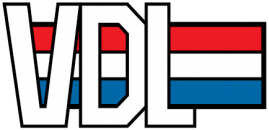Inspection & maintenance
For VDL Mast Solutions, the project doesn't stop after the mast has been installed and commissioned. A mast is subject to all kinds of environmental factors that can affect the structure or lifespan of the mast. That is why VDL Mast Solutions offers regular inspections that aim to identify any defects and unsafe situations. This keeps long-term maintenance costs within reasonable limits. Furthermore, any recommended maintenance can be performed by our own experts.
Comprehensive inspection
The entire structure is visually inspected as standard by our experienced and qualified specialists. Generally, the following components and connections are inspected: preservation, weld connections, flange connections, mechanical attachments, antenna supports, attachment of fittings and landings. Essential in the work is the availability and condition of the required fall arrest system. Specific inspections, such as layer thickness measurements, can also be performed on request. All inspections are done safely and in compliance with the applicable guidelines and regulations.
Inspection of various mast types
VDL Mast Solutions can perform inspections on a variety of mast types, including:
- Communication masts, for example lattice towers and monopoles
- Advertising masts
- Site lighting masts
- Sports field lighting masts
- Signalling, radar and beacon masts
Advice
The extensive inspection report contains our findings and are illustrated with photographs. We also offer recommendations for optional additional maintenance that can help solve the situation.
Maintenance and repair work on the mast
VDL Mast Solutions can carry out any recommended maintenance work to masts. In addition to the inspections mentioned above, we can also help you with maintenance and service for the following:
- Strength calculations
- Supply and optional installation of extra parts, such as antenna outriggers or luminaire brackets
- Disassembly, replacement or relocation of masts and towers if desired
- Installation of the correct fall protection system
- Replacement of wear-sensitive parts, for example winch cables or guide rolls.
- Welding or other repair work on site and at heights

